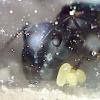May 15, 2014 — There are about 30 workers, and the number is growing slowly. They are living in a prototype of the Foundry formicarium, but there are almost too many of them for it to be useful. They refused to move into a prototype that had plaster coating the walls, I'm assuming because there was significantly less room than the more roomy setup they later preferred.
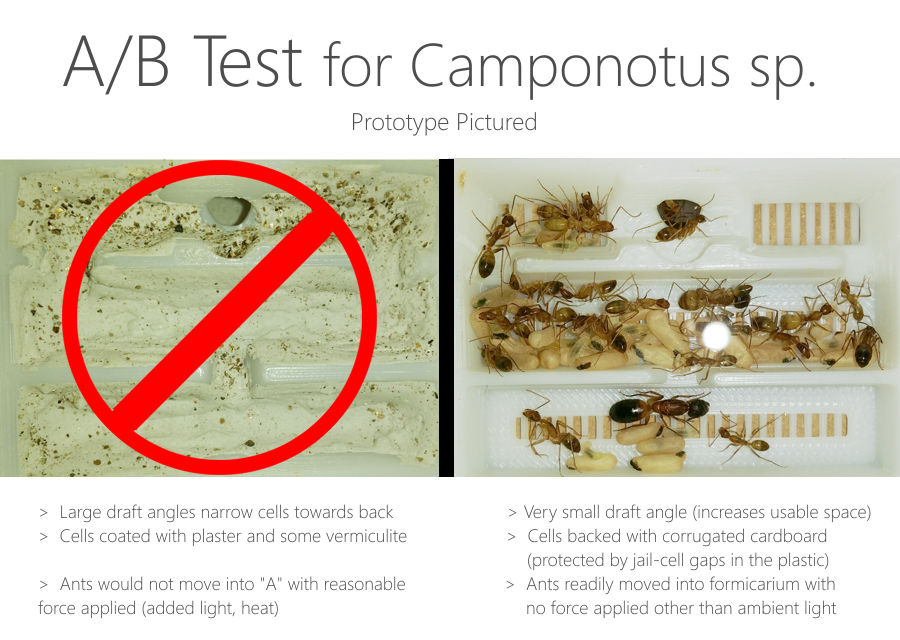
June 5, 2014 — Colony currently numbers about 40 workers, and is living in a 3D printed nest after having outgrown the previous 3D printed nest that was 1/3 the size. They are connected to a 5 gallon tropical foraging area with misting system and plants. Once or twice, they abandoned the designated nesting area for a small crevice in the foraging area, but were easily persuaded back into the nesting area once disturbed. Many different experimental variations of Formula Ant Diets and Supplements are tested.
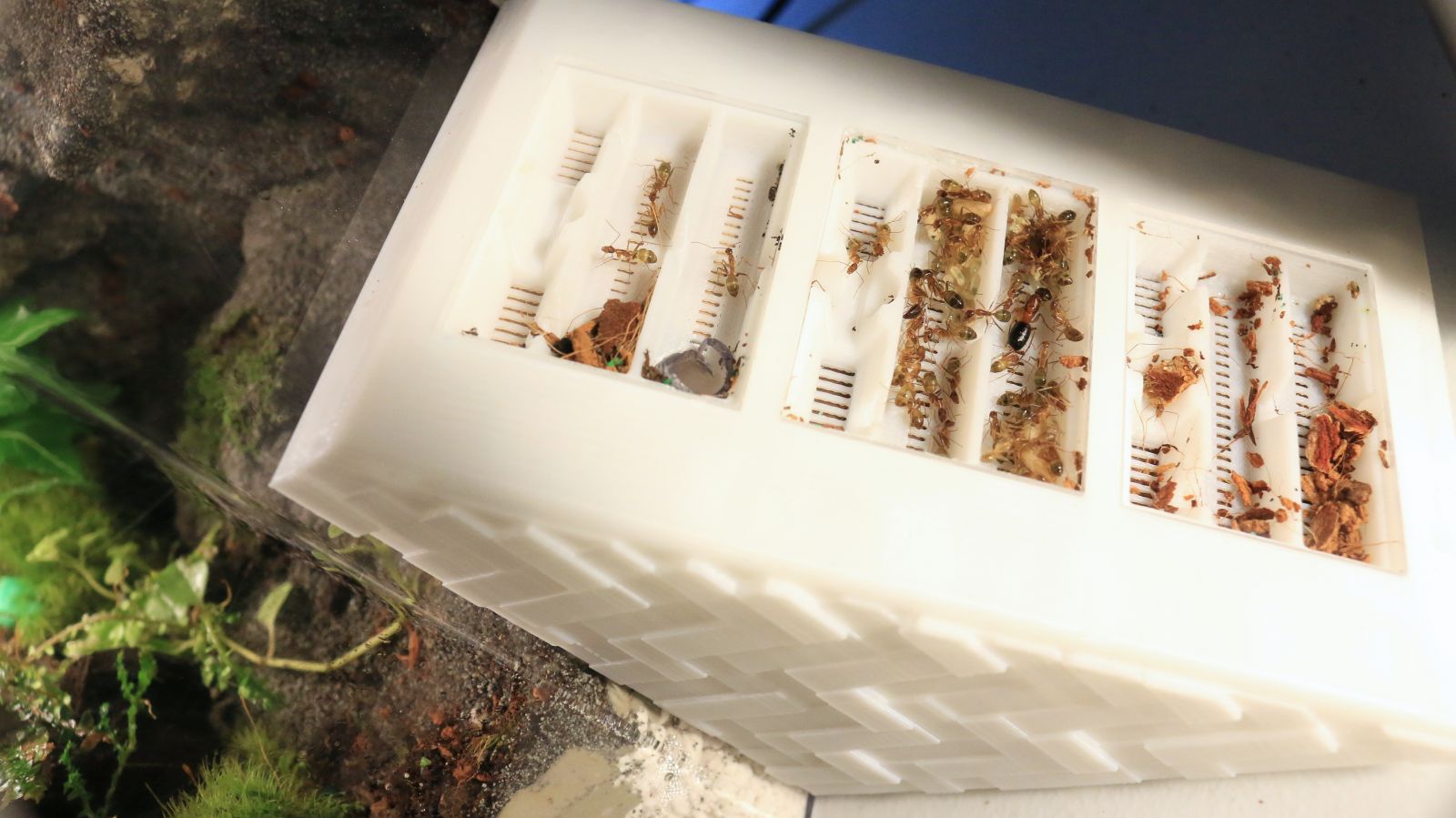
July 28, 2014 — Argentine ants attacked colony of 50-60 workers, killing over half. Queen was running around frantically in foraging area as Argentine ants swarmed. Ants were manually rescued and moved to a new habitat. The colony had been doing well up to this point, tripling in population over the course of about 4 months.
July 30, 2014 — Less than 30 adult worker ants remain alive after the Argentine ant attack. They are relocated in a Found prototype, but it is too small for them with all their brood, so a new formicarium is designed.
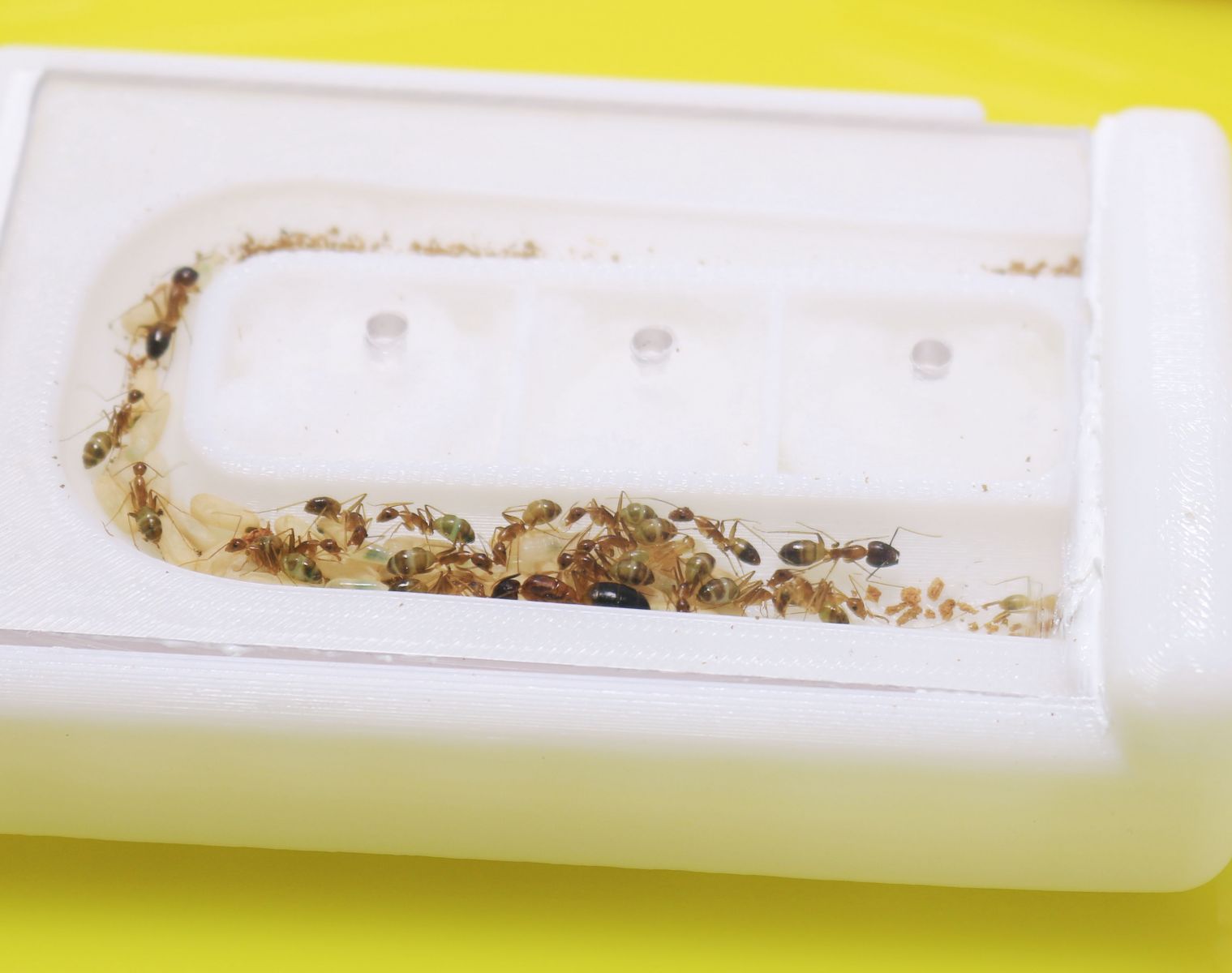
August 4, 2014 — Ants are successfully moved into a 3D printed spiral formicarium, which offers a large amount of room in a 1.75" vinyl tube, oriented vertically. The foraging area is a 5 gallon aquarium lined with bare epoxy plastic resin floor and white dye. I observed one dead worker, unknown cause.
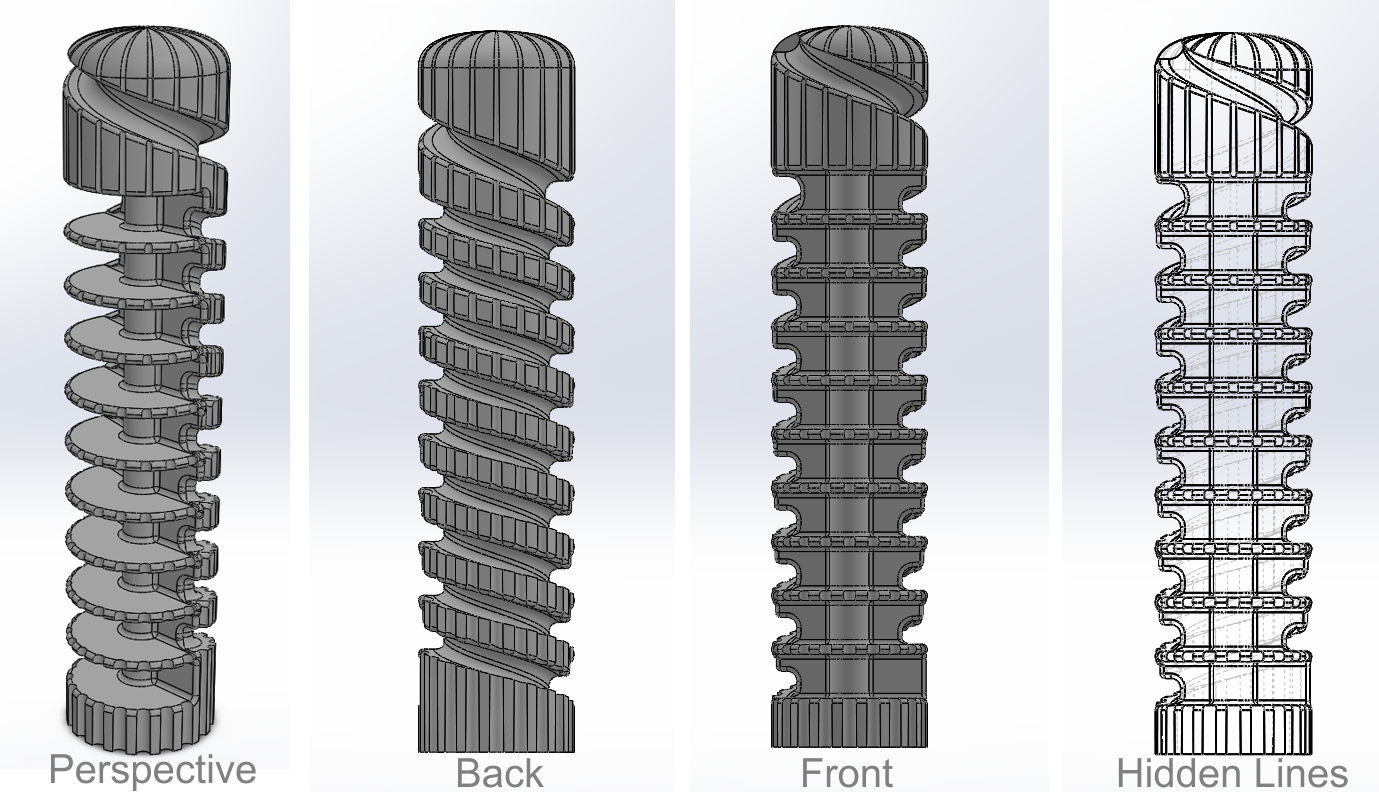
August 6, 2014 — Observed cannibalized pupae, unknown cause
August 6, 2014 — Prepared new food gel (Blue 100)
August 7, 2014 — Observed huge clutch of eggs, no last star larvae. I believe the ants are still getting settled into their new habitat.
August 10, 2014 — Population, appx. 26 workers. Observed ants only recruiting to food source in darkness
September 24, 2014 — Population, 75+ workers, 40 pupae, many eggs and larvae. 4 dead after being given little food or water; 1 from injury from spider. About 90% of the ants' diet comes from Formula Blue 100 and Green 600, with the remaining 10% from common insects found inside the house (spiders, nymph roaches, earwigs, etc.) They are starting to get too great in number for the vertical tube formicarium, which is at about 80% capacity.
October 4, 2014 — Moved entire colony into a prototype of the Flourish formicarium, connected to a 10 gallon foraging area with a custom, 3D-printed hood, lighting system, misting and ventilation system
October 9, 2014 — Filmed colony and foraging area
October 20, 2014 — Colony is about 1 year old. Population has doubled in one month to 140+ workers (an increase of nearly 450% since the Argentine ant attack almost 3 months ago), 60 pupae, and 80-100 eggs and larvae of various stages. The weather was cooler today (holding at 22C in the ant room), and after weeks of voracious appetite, feeding slowed today, and most ants stayed in the nest with almost none recruiting to Formula food sources, except Green 600 in a liquid feeder that is almost empty. Formula Ant Diets and Supplements continue to make up 90% or more of their diet.
October 28, 2014 — Last week, I mentioned the ants seemed to be eating less, and I thought it was due to the cooler temperature. The temperature has since warmed up, but days before it did, they started eating more, again. The difference? I removed a liquid feeder that was dispensing a practically unlimited amount of Formula Green 600, and they went from completely ignoring Blue 100, to voraciously eating it again, two days after I removed the liquid feeder. I can't prove there is a relationship between feeding a very sweet substance, and them not eating the Blue 100, but I can observe what appeared to happen.
The current brood count is down, since a number of workers eclosed within the past week. I counted about 35 pupae, around 50 larvae, and about 50 eggs.
I added a large quantity of young crickets, which I haven't done in months, to act as janitors alongside the mature roaches. Many of the crickets have since been eaten, and the hemolymph from the crickets has turned many of the larvae's stomachs a bright yellow/orange, alongside the blue/green color from Formula diets. It's interesting to see. I won't be adding any more young crickets for a while, since they can't seem to hold their own against the ants.
November 10, 2014 —
The colony seems to be on the verge of a major population spike.
Current census:
175+ Workers
80+ Pupae (tons and tons!)
15+ Larvae
35+ Eggs
November 27, 2014 — With the winter weather, the ant room has also gotten significantly cooler, leading to a marked decrease in the momentum of growth.
Most of the now well over 200 workers are just lounging around the nest with full bellies of Blue 100. There are a few pupae and eggs, but no larvae to be seen.
At the coldest point, the ants decided to move into the foraging area. which is slightly warmer and wetter because of the 24/7 lighting and misting. Once discovered, it was easy to prompt them to move back inside the formicarium, as conditions in the tank were less than ideal (wet and no space to hide).
In a somewhat bizarre twist of events, there remains a group of 20-30 workers that have created what appears to be a satellite nest in the upper-most reaches of the foraging area. They constructed a small canopy from the wet soil and may be incubating larvae or eggs in this small nest, under the dim lights of some burnt out LEDs (the LEDs somehow overheated in this section and are now yellowish and dim).
I have positioned an ITO heated glass on top of the nest portion of the formicarium, which I've since connected to a rheostat, a simple, variable resistor (think lamp dimmer), to keep the heated glass from frying the ants as it did the last time I installed it. The temperature jumped from just over 60F to now around 75 to 80F inside the nest, with the addition of the ITO heated glass.
This past week, the ants have had a great time testing the new LIGHTYEAR® Liquid Feeder, available now on Amazon.com. The feeder is so versatile, even the large roaches and crickets in the foraging area are able to drink from it. Sometimes the roaches knock it over, and the liquid doesn't even spill out. The colony of 200 plus roaches will down about 1.5 to 2ml of Blue 100 prepared as a liquid per day.
I'm working on a new Formula product that will be more suitable for liquid-only feeding of both carbs and protein, since the current ones containing protein can be somewhat tricky to prepare for liquid use. The problem with the current ones is that they work best when cooked, but cooking can also activate the agar, causing the product to gel.
It may be possible to repackage Formula products so that the agar needed for each individual preparation is in its own, separate baggie, instead of integrated into the mixture; however, this doesn't seem like the most elegant solution.
More details soon.
Edited by drtrmiller, January 10 2015 - 1:36 PM.











